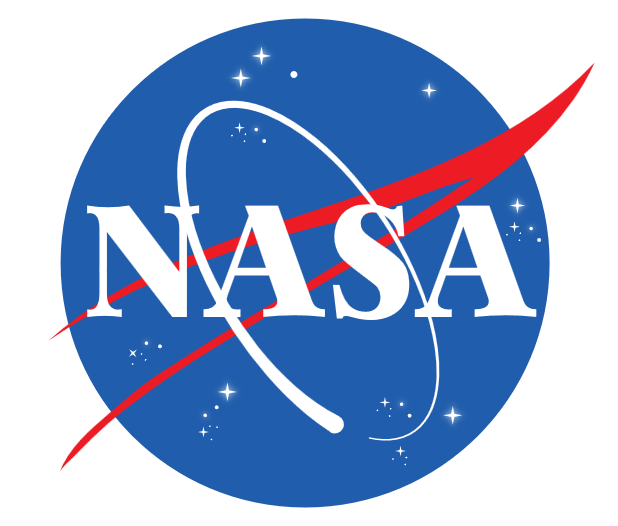Advances in computation and data have fundamentally transformed modeling across science and engineering. While our immediate focus is on fluid dynamics, our methodologies are broadly applicable to complex spatiotemporal systems. Our research integrates theoretical, computational, and statistical techniques to develop hybrid modeling frameworks that combine the rigor of physics-based models with the flexibility of data-driven approaches. To this end, we actively explore scientific AI frameworks and novel machine learning architectures to enhance modeling, prediction, and data assimilation in aerospace and Earth science applications.
1) Mathematical and Computational Foundations for Predictive Digital Twins
AFOSR — Multidisciplinary University Research Initiative (MURI)
FA9550-24-1-0327
2024–2027 (2029)
This MURI will advance foundational theory and methodologies that address these challenges through an integrated research program that leverages our team's expertise in physics-based modeling, generative artificial intelligence and machine learning, inverse theory and data assimilation, decision making and optimal control, surrogate and reduced modeling, uncertainty quantification, and high performance computing. The project is led by Karen Willcox (University of Texas at Austin) and is a collaborative effort involving Omar Ghattas (University of Texas at Austin), Charbel Farhat (Stanford University), Benjamin Peherstorfer (New York University), and Rebecca Willett (University of Chicago).
2) Physics-Guided Multifidelity Learning for Characterization of Blunt-Body Dynamic Stability
NASA Early Stage Innovations (ESI)
80NSSC23K0231
2023–2027
This project, conducted in collaboration with Kursat Kara (Oklahoma State University), aims to advance understanding and predictive capabilities for atmospheric entry vehicles used in planetary exploration. Such vehicles, designed with blunt forebodies to withstand extreme heating, often experience dynamic instabilities at supersonic and transonic speeds, leading to potentially catastrophic tumbling. The underlying physical mechanisms remain elusive due to complex, unsteady flow phenomena. This research will develop hybrid physics–data modeling approaches within a physics-guided machine learning framework to characterize and predict the dynamic stability and performance of reentry systems. The effort seeks to establish a trustworthy learning platform that integrates model fusion, feature engineering, and symbolic regression to extract new physical insights from experimental and high-fidelity simulation data.
3) Physics-reinforced Machine Learning Algorithms for Multiscale Closure Model Discovery
DOE Early Career Research Program
DE-SC0019290
2018–2023
This project explores physics-informed machine learning approaches to advance the understanding and modeling of geophysical turbulence. Moving beyond traditional parameter tuning, it develops data-driven frameworks grounded in physical constraints to discover closure models for complex multiscale systems. The research aims to improve numerical weather prediction and enhance parameterization strategies for DOE mission-relevant challenges.
4) Collaborative Research: Data-Driven Variational Multiscale Reduced Order Models for Biomedical and Engineering Applications
NSF Division of Mathematical Sciences
DMS-2012255
2020–2024
This project, in collaboration with Traian Iliescu (Virginia Tech) and Alessandro Veneziani (Emory University), aims to develop novel data-driven reduced-order modeling (ROM) methods that combine high-fidelity simulations with machine learning to achieve unprecedented efficiency and accuracy. By enabling complex models with millions of unknowns to run in minutes on local computing platforms, the research will significantly reduce computational costs in optimization and sensitivity analysis. With applications in biomedical and wind engineering, the proposed ROM framework will facilitate rapid, reliable simulations for scenarios such as aortic dissection modeling, pediatric surgery planning, and wind farm optimization, providing a powerful and trustworthy tool for real-time decision-making.
5) Development of reduced-order system models for next-generation model-predictive control of comfort cooling equipment
Center for Advancement of Science & Technology (OCAST)
OCAST-AR21-042
2022–2025
This project, in collaboration with Craig Bradshaw (OSU) and Rushi Kamalapurkar (OSU), aims to advance modeling and experimental capabilities for next-generation building energy systems. Since comfort and ventilation equipment account for nearly half of building energy consumption, improving their performance modeling is essential for maximizing energy utilization and grid flexibility. Current models often fail to capture transient behaviors and varying load conditions, leading to significant discrepancies between predicted and actual energy use. To address these challenges, the project will generate dynamic datasets of unitary equipment using Hardware-in-the-Loop (HIL) techniques at OSU’s advanced facilities, develop high-fidelity dynamic models, and construct and validate reduced-order models. The resulting framework will enable accurate, efficient design and operation of future energy-resilient buildings.
6) FME NorthWind (Norwegian Research Centre on Wind Energy)
The Research Council of Norway
FME NorthWind
2021–2029
Participation in the Norwegian Research Centre on Wind Energy (FME NorthWind), contributing to wind energy research and development. FME NorthWind brings together nearly 50 partners from academia and industry worldwide under Norway’s Centres for Environment-friendly Energy Research (FME) initiative. The program supports long-term research in renewable energy, energy efficiency, and the social dimensions of the energy transition, emphasizing innovation, international collaboration, and researcher training. FME NorthWind aims to advance cutting-edge research and innovation to reduce the cost of wind energy, promote sustainable development, and strengthen industrial competitiveness.
7) KPN Hole Cleaning Monitoring in Drilling with Distributed Sensors and Hybrid Methods
The Research Council of Norway
KPN 308823
2021–2025
This project, in collaboration with Adil Rasheed (NTNU), addresses the critical challenge of effective hole cleaning during drilling to reduce both economic and environmental costs. Current practices rely largely on pre-operation physics-based calculations, occasional real-time updates, and human assessment of limited parameters, such as hook load trends during drill string connections. The advent of high-bandwidth sensor data along the drill string presents an opportunity to leverage this wealth of information for more accurate and reliable monitoring. The project develops novel hybrid modeling approaches that combine the interpretability and robustness of physics-based models with the accuracy, efficiency, and pattern-recognition capabilities of advanced machine learning and artificial intelligence, enabling efficient and improved monitoring of hole cleaning throughout drilling operations.
8) Develop design criteria for psychrometric air sampler and mixer apparatus for use in ASHRAE test standards
ASHRAE (RP-1733), Technical Committee TC 8.11 — Unitary and Room Air Conditioners and Heat Pumps
ASHRAE RP-1733
2018–2020
Collaborated with Christian Bach, this project focuses on developing testing methods, new mixers, and air samplers, as well as evaluating their in-situ performance through coil tests of 1.5-ton, 3-ton, and 5-ton units. The objectives are to provide (i) design recommendations for measuring bulk air conditions and (ii) methods for validating sampler–mixer combinations to achieve the most accurate bulk temperature and humidity measurements at indoor air inlets and outlets.
9) Effect of inlet duct and damper design on ASHRAE 37/116 fan performance and static pressure measurements
ASHRAE (RP-1743), Technical Committee TC 8.11 — Unitary and Room Air Conditioners and Heat Pumps
ASHRAE RP-1743
2017–2020
Collaborated with Christian Bach, this project investigates the effects of inlet duct design on fan power, optimal static pressure measurement locations, and airflow profiles at the duct exit. The study provides specific guidelines for inlet duct design to narrow the design space toward configurations that have minimal impact on equipment performance, as demonstrated by comparable outlet flow profiles obtained through validated CFD simulations and experiments.
10) Blind deconvolution of massively separated turbulent flows
NASA Oklahoma Space Grant Consortium / NASA EPSCoR — Research Initiation Grant
OSGC-RIG-2017
2017–2018
Collaborated with Prakash Vedula (University of Oklahoma), this research project focuses on blind deconvolution techniques for analyzing massively separated turbulent flows and explores the feasibility of a heuristics-free turbulence modeling framework aimed at developing robust and accurate closure models for coarse-grained simulations of these complex flow regimes.






